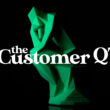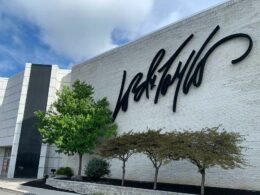Meeting expectations drives profits. And, as you’ll see, that pun is ultimately going to be intentional. (Don’t be impatient! You’ll see. You’ll see). Because when a brand or its market efforts better meets expectations, consumers hold for their “Ideal” in a category and they behave better toward that brand. Sounds simple, huh? And as an approach to brand engagement and loyalty, sales, and ultimately, profits, it is.
Getting to an accurate consumer measurement system for expectations, on the other hand, is a little bit more complex. But that only seems fair since 21st century consumers and customers and the marketplace are all also more complex. No, behavioral measures and engagement and loyalty (all interconnected) are more complex too.
It all comes down to the consumer-to-brand bond – the emotional engagement that ensures loyalty and future purchases. From a measurement perspective it’s defined as the degree to which a brand meets expectations that consumers hold for the Ideal product or service in its category. It’s the answer to the question, “How well does the brand deliver on what consumers really desire?” “Desire” having a lot more to do with emotional values than rational, “price-of-entry” values. which are generally ubiquitous.
Anyway, the better a brand measures up to those mostly-emotional value expectations held by consumers, the better consumers will behave toward the brand. Expectations have the added advantage of identifying value-shifts 18 months before they get articulated in focus groups or make an appearance in brand tracking studies. And before marketers see them in real-time consumer behavior, sales, and profits. So, relying on expectations is kind of like driving a car down the road actually looking through the windshield rather than trying to steer just using a rear-view mirror! (Not so much a pun as much as a category metaphor.)
I bring this up because, in a more complex marketplace and mediascape, it’s one thing to say something and an entirely different kettle of fish to prove it. So, as we’ve just published our 26th annual Customer Loyalty Engagement Index (CLEI), we thought we’d see how brands (or in this instance, two particular brands) did when it came to meeting expectations. And how they did when it came to driving profits (pun alert). For those of you unfamiliar with our CLEI, it’s an examination of 1,624 brands in 142 categories and part of the psychological process give us access to those mostly-emotional expectations, the “Rolls Royce” of behavioral measures.
And, if you’ve sped ahead of me, yes, I’m going to look at. . . wait for it, the App-Based Ride Share Category. If you guessed “automotive,” you were very close, but I went with Ride Share because both Uber and Lyft released their financial results last week and what could be better proof than an actual “bottom line”?
Both Uber and Lyft managed to avoid any blowouts due to the recent potholes that showed up in the tech sector. Uber reported $8.6 billion in revenue in the last three months of 2022. That’s a 49% increase YOY. Uber logged two billion trips and, more importantly when it comes to engagement and loyalty, what the brand earned in gross billings paid by riders i.e., customers, was up 19%.
So, you’d figure that they were doing what we espouse – better meeting customer expectations, seeing better behavior from their customer base, making more money. And they did! Uber was #1 in its category this year because it was able to better meet expectations customers hold for their Ideal when it comes to App-Based Ride Sharing. If you’re interested in seeing other categories and which brands came in first in their race for loyalty and profitability, you can find that list here. Lyft, which came in #2 this year, reported its financial results too and they were up +21%.
Internet-based services like social networking and video conferencing saw tremendous growth during the pandemic lockdowns and WFH initiatives. Oh, and reality matters, of course. In every category. Tech companies (we include anything app-based in that sector, so both Uber and Lyft are fair game) have been announcing layoffs and cost-saving measures recently. FYI, both Uber and Lyft have indicated minimal anticipated layoffs and maximal expense budgeting. But as I pointed out, reality matters.
But these days, what matters more, is your brand’s ability to have a strategic roadmap to help you get the best MPG from your brand and meet those pesky expectations better and faster than your competition. Particularly if you want to step on the gas when it comes to brand engagement, customer loyalty, and brand profitability. Because falling behind the competition when it comes to meeting expectations is like driving an electric car into a dead-end street. There’s no outlet!
(OK, I am sorry about that one. But you get my point!)
Photo by Alex Jumper on Unsplash













